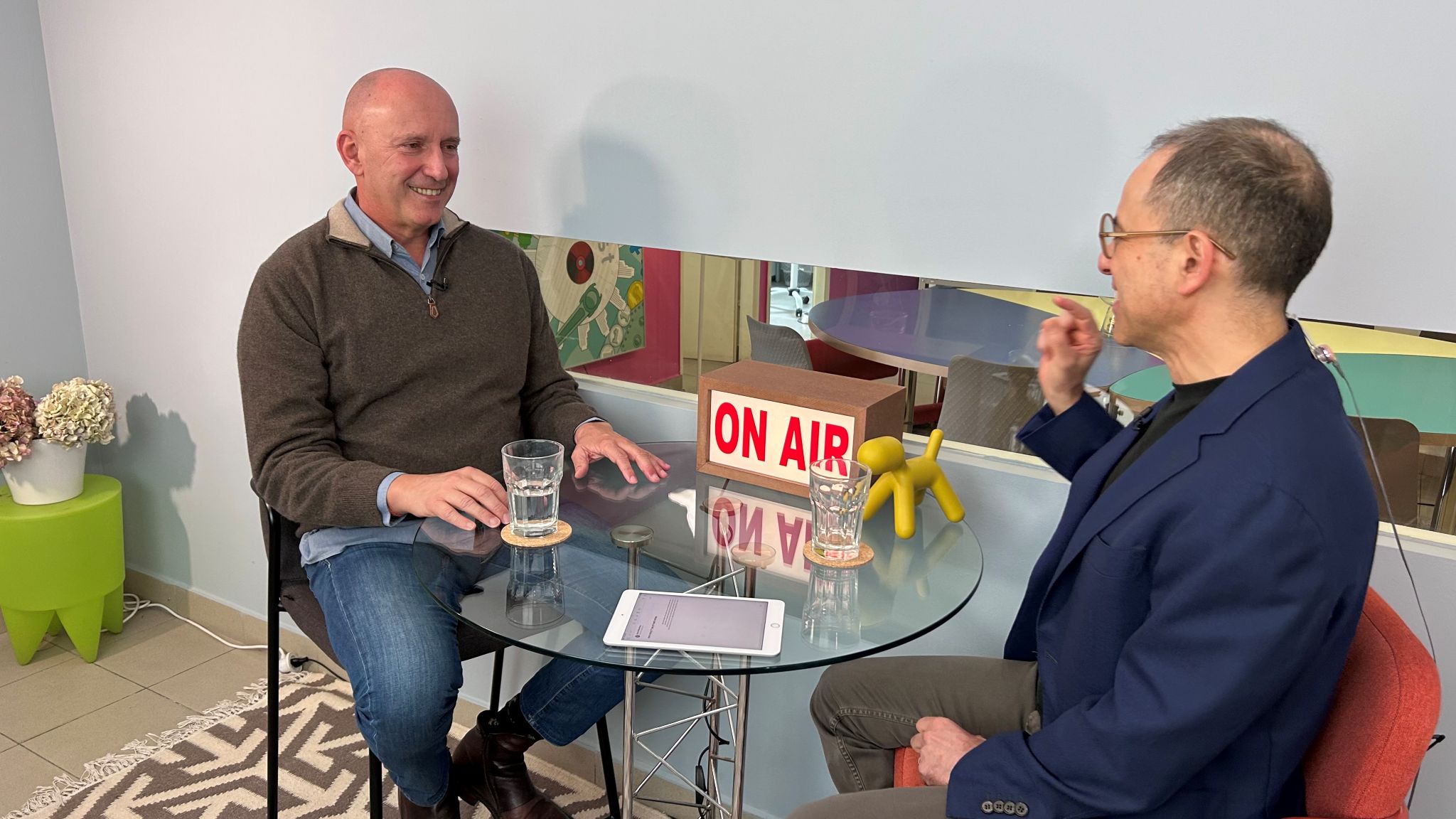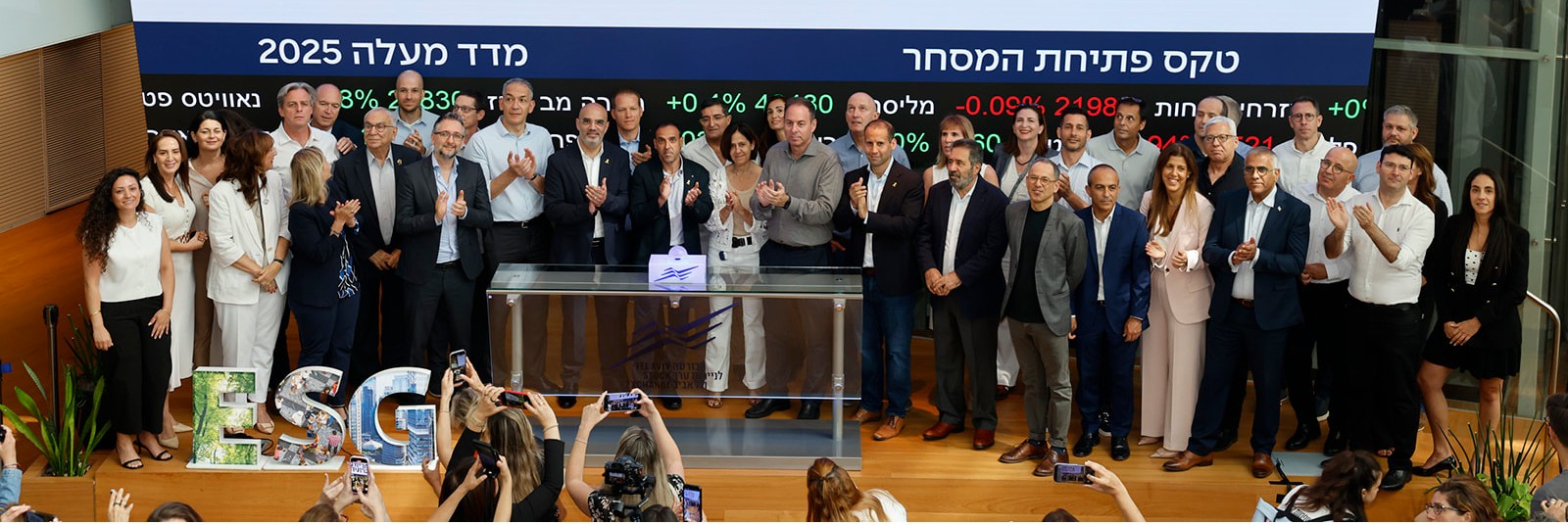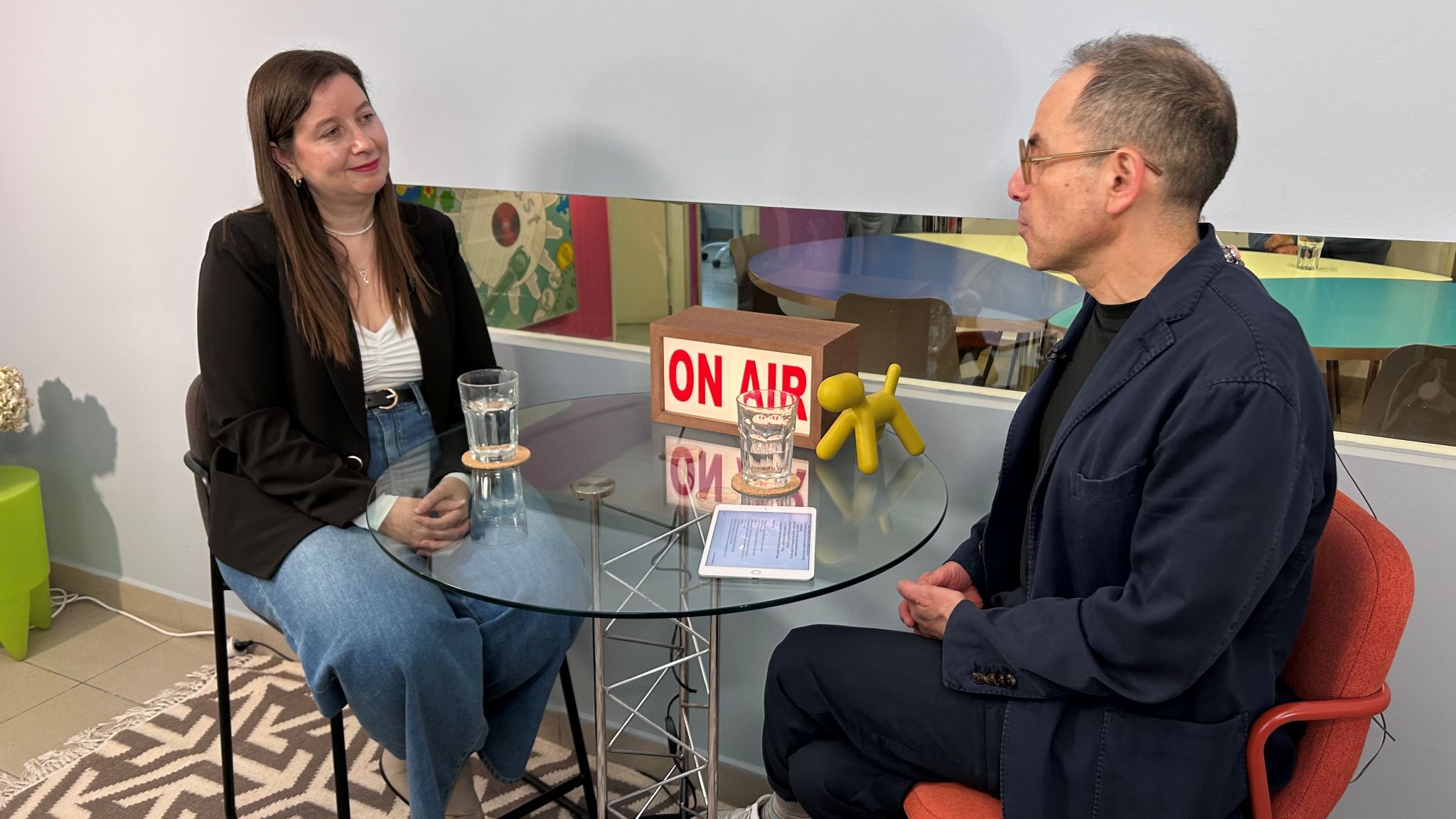A conversation with Moti Levin, CEO of Haifa Group, about the company’s activities, tomorrow’s agriculture, and nutritional challenges and how to “feed the world”
To watch the full interview with Moti Levin Click here<<
Hi, Moti, thank you for joining. Let’s start with “Haifa Group”. Not everyone knows. The heart here is agriculture and food, right?
That’s right, food security. “Haifa Group”, formerly “Haifa Chemicals”, a copywriter’s mistake in the 1960s, those were years when industry had its respect, including the chemical industry.
Our production processes involve chemistry, but in a reaction between materials, but we don’t use chemicals, we don’t produce chemicals. In fact, we produce fertilizers or materials Nutrients that are intended for precise plant nutrition. Our world is a world of plant nutrition.
And in this world of plant nutrition – where is the “Haifa Group”? Where is Israel compared to the world?So basically, I’ll say this: the agricultural world is a world that makes extensive use of natural resources, fertilizers. The concept of “fertilizing the soil” is a concept that we all grew up with and with very romantic meanings.
But in truth, this is also the reason that the world of fertilization is a world that is perceived as a polluting world and there is too much excess fertilization, excess water use. As a result, there is also a lot of pollution and evaporation that creates the greenhouse effect. The world “Haifa” is active in is a world of precision fertilization. We give the plant, not the soil, the plant its needs. A pepper grown in Baja California grows under different conditions than a pepper grown in the Arava, and we need to know how to be precise. Just as we raise our children in a way that is not generic, so too we know how to give the plant, the South African potato, its response differently from a potato grown in Poland.
This thing actually creates a whole world called “precision agriculture” or “precision fertilization”, allowing us to achieve much higher yields, to impart properties, such as a longer shelf life, and at the same time, as I said before, to reduce the use of minerals, reduce the use of water, and of course reduce environmental damage.
To watch the full interview with Motti Levin click here<<
Fascinating. And of course, naturally, most people, I don’t think they understand this. We’ll get back to precision agriculture soon. Where does Israel fit into this picture in relation to the world, in general, the industry that sits here?
So that’s very interesting. Today, the concepts of environment, sustainability, food security, these are concepts that are commonplace, and have become a kind of goal that governments aim for, goals that governments aim for, international treaties, the appointment of ministers in Israel for food security as well.
But the State of Israel is a country that, since its establishment, has been an island state, with an island mentality, the edge of a desert, severe water problems, an increasing increase in nutritional needs as a result of waves of immigration, etc.
So already in the sixties, fifties, with the establishment of the state, it had to deal with constraints that pushed it towards what we today call food security, environment, Sustainability – concepts that are seemingly modern. But the State of Israel was forced to deal with a variety of constraints that essentially created everything we know today as Israeli ag-tech. And this is actually the reason why the State of Israel has built such a positive reputation for itself in everything related to ag-tech.
And today, when “Haifa” is going around the world, do you see it?
You feel it. If you ask about “Haifa”, in August we were elected to head the Plant Nutrition Working Group of the International Fertilizer Organization. Personally, I am the chairman, but the point is that we have built ourselves a reputation for those who lead the world in an innovative, correct, precise direction, who know how to deal with environmental issues, and provide the necessary nutritional security.
The world still mostly works through traditional agriculture. Growers, it is difficult for them to adopt new methods. The grower in most of the world would prefer to work the way his great-grandfather worked, the way his great-great-grandfather worked, because he wants to produce as much as possible within the existing season. Coming and teaching and guiding and imparting new tools is a process that takes a very long time.
Today we are already spread out in 18 countries, each such subsidiary is a regional HUBJ. We know how to reach farmers in over a hundred countries. But most of the agricultural world is still a world that uses old, outdated methods that are wasteful and not environmentally friendly. And that is our challenge and that is also our potential.
Yes, it really has great potential. Say, the factory today in the Negev, a factory that is mostly new, right?
It was built and there is a lot of thought there that is around a circular economy. In fact, this factory was established to support our original factory that was in those years in Haifa Bay. It was established in the 1990s. The production capacity for which it was designed was 100,000 tons of our main material called potassium nitrate. We are currently in the process of gradually increasing production capacity to 400,000 tons of potassium nitrate, which is four times more than this product alone, and a very long list of other products.
But that is in terms of output. In fact, the process that “Haifa” is leading is not only investing in downstream, in production capacity, but also in upstream, in the source of the raw material. Our main raw material, by the way, is ammonia, a gas whose name has become infamous.
And I would also be happy to correct this distortion. We will return to that shortly. But… and this will be the only ammonia plant, actually blue ammonia, ammonia that is fed from energy that is decommissioned energy, a solar field that we are building next to the plant, and there are many processes related to the circular economy, such as a facility for concentrating and liquefying carbon dioxide, which will be directed to a very wide range of industries such as seawater desalination, such as food and beverages, but also for agricultural needs.
In fact, increasing the concentration of carbon dioxide, CO2, in the greenhouse increases yields. We did experiments with the Ramat Negev R&D on tomato crops. Pumping CO2 in the Ramat Negev greenhouses increased yields by 15% to 20% – it’s dramatic.
Really impressive, so basically the same CO2 that is already notorious, so here you both reduce it and actually make positive use of it.
Exactly. And this is one of the principles of the circular economy, not the only one. When you increase a factory from 100,000 tons of potassium nitrate to 400,000 and between 200,000 and 300,000 tons of additional products, then you have to change the entire element of the change, All the infrastructure. This year we inaugurated a railway extension together with Israel Railways, a wonderful project. We built a terminal for 3,000 containers. We are taking thousands of trucks off the roads.
There is a development momentum there that is extraordinary, especially in these years when Israeli industry does not receive a tailwind, I say this carefully, from the environment and the government.
Very interesting. It is a fascinating place, by the way. You can also see it a little in the pictures. An impressive industry. You mentioned ammonia, and indeed “Haifa” is associated with ammonia, very infamously. You said that wrongly. Explain to us a little why..
First of all, ammonia is Gas. Unlike ammonium nitrate, which is a salt that exploded in the Beirut port, ammonia is a gas, one of the components of natural gas, it is produced from natural gas, it is a gas whose invention, its production process, called Haber-Bosch after its inventors Fritz Haber and Karl Bosch, earned them both Nobel Prizes.
Fritz Haber, who was a German Jewish scientist, was called by his entourage “the man who brings bread out of the air,” because in fact, what the ammonia production process… the Haber-Bosch process, the ammonia production process, does is capture the nitrogen in the air and allows it to reach the soil and the plant.
This is very, very important, very critical, because the increase in population on Earth in the last 100–120 years, From one and a half billion people to over eight billion people, and according to the FAO, the Food and Agriculture Organization of the United Nations, by 2050 we will exceed 11 billion people. All of this needs to be fed now.
If it weren’t for the use of ammonia in the fertilizer industry, it would not have been possible to reach half of the planet, half of the population on Earth would not exist today. So that’s the fundamental importance.
Here we have the first step, which is required right now. Now in terms of risk, ammonia is a gas that is not explosive, it is not flammable, it has a color. It arrives at an atmospheric pressure of minus 32 degrees. This means that when exposed to air, it flies into the atmosphere, you can recognize it from afar because it has a very strong odor.
So let’s put it this way, you can deal with it. I don’t recommend swimming in a pool of ammonia, it’s not recommended, just like you don’t do it with other chemicals. But it’s not as bad as it sounds.
Okay.
Since the ammonia tank in Haifa Bay was closed, “Haifa Group” has built a logistical model of importing ammonia in isotanks in small containers. This is how we actually meet the ammonia needs of our factory in the south, and very soon, with the inauguration of the “Blue Ammonia” factory, the blue ammonia, we will actually produce the ammonia on site, use it, and also supply the ammonia needs of the Israeli economy.
We are not the only consumers, there are other consumers, not just in the fertilizer industry. Ammonia is a very, very important gas, and thanks to the many employees and managers who have been working on this project for a good few years, there will be blue-white ammonia.
Very nice. When is this expected, by the way?
We are really close to the start of the trial run. Our work plan for 2025 is that we will start seeing ammonia produced by us towards the end of the year. This is a project, by the way, of a very significant scale, the total investment volume is over $300 million, with the supporting peripheral projects being $330 million, which are invested only in the ammonia issue. The total investment in our plant, which you mentioned earlier, is approaching $700 million.
Very impressive. And this will also probably have a significant environmental impact in terms of your operational indicators.
Not only environmentally, but also economically, it is very economical. In environmental aspects, it will first of all reduce all transportation of isotanks that arrive via trucks from Egypt or by ship, and yes, it has extraordinary economic implications. There is a government decision from April 2017 regarding the ammonia economy in the long term, where it was decided that the State of Israel will produce the ammonia itself. It relies on the fact that we are rich in natural gas.
Very good. So tell me, in conclusion, you already mentioned precision agriculture, you mentioned the great challenge of feeding the ever-growing world. Where is agriculture going, if we want to understand a little bit, as those who generally understand less about the day-to-day of agriculture?
As I mentioned before, this issue of precision agriculture, thanks to the fact that it is a classic situation, where you produce much more with much fewer resources – that is where the world is going. More and more companies in our worlds, in the worlds of fertilization, understand that the real horizon, and ultimately the real yield, are in the precise area. Producing precise fertilizers is not enough, and one of the things that “Haifa” does is that we also invest a lot in the envelope, in creating a comprehensive solution. This includes, among other things, entering the world of vitamins for plants. In our world, this is called biostimulants, enhancers of properties. You don’t just feed, you also have to take care of stress situations, extreme situations, drought, cold. Even the straightening of trunks, in the world of forestry this is very, very important, there are solutions for that too. They are solutions that are usually organic, do not combine chemicals.
Add to that the digital element: our world is in the midst of a technological revolution. “Haifa” on the one hand, has invested a lot in creating fertilization optimization software, which, by the way, is provided for free, there is no money, you can simply download them for free. But we also invested in a system that can identify, a kind of MRI of a plant, what the nitrogen level is in its leaves, from that to draw additional conclusions, and add features to this digital platform, including a carbon savings calculator, and since this will all go to Big Data, it can also become an arena for trading carbon savings.
So here we are, the world is moving towards a much more precise world, much smarter towards solutions that are holistic.
Very impressive. So this farmer, who we think of, with his clothes and shoes full of mud, becomes a high-techist, partially..
Also, that Indian farmer who follows the buffalo with a wooden plow, has a smartphone stuck in his loins. Two weeks ago, we inaugurated “Haifa India” in a very impressive ceremony at the Taj Mahal Hotel in Mumbai. It’s not that we don’t sell in India, we’ve been selling in India for many years, but we came to the conclusion that we must plant our stake there, because you see an economy and agriculture there that is simply moving at a very fast pace and, yes, in the end, they too are using digital solutions.
Very impressive. Moti, thank you very much for sharing with us. You have opened a window for us here to many concepts that we throw around and talk about, but do not always understand. Definitely a picture that illustrates the challenges of the world of agriculture and food, but also the progress.
Thank you very much for hosting. There is no doubt that as we delve deeper into the field of precision agriculture, it will meet the issue of food security, we will be heading towards a much more sustainable and much stronger world in all these aspects while utilizing the platforms that we already have in our daily lives. Thank you very much.



